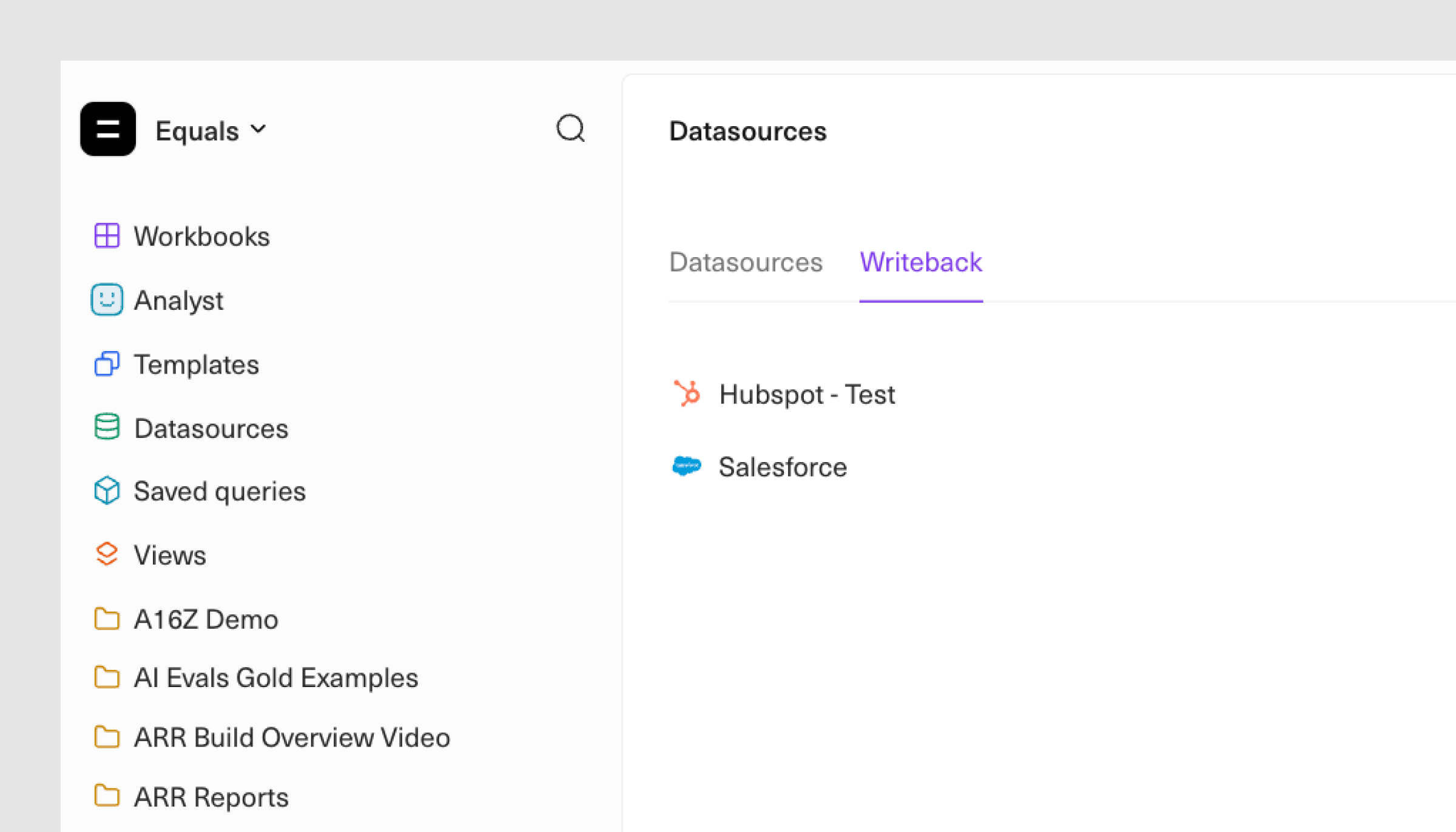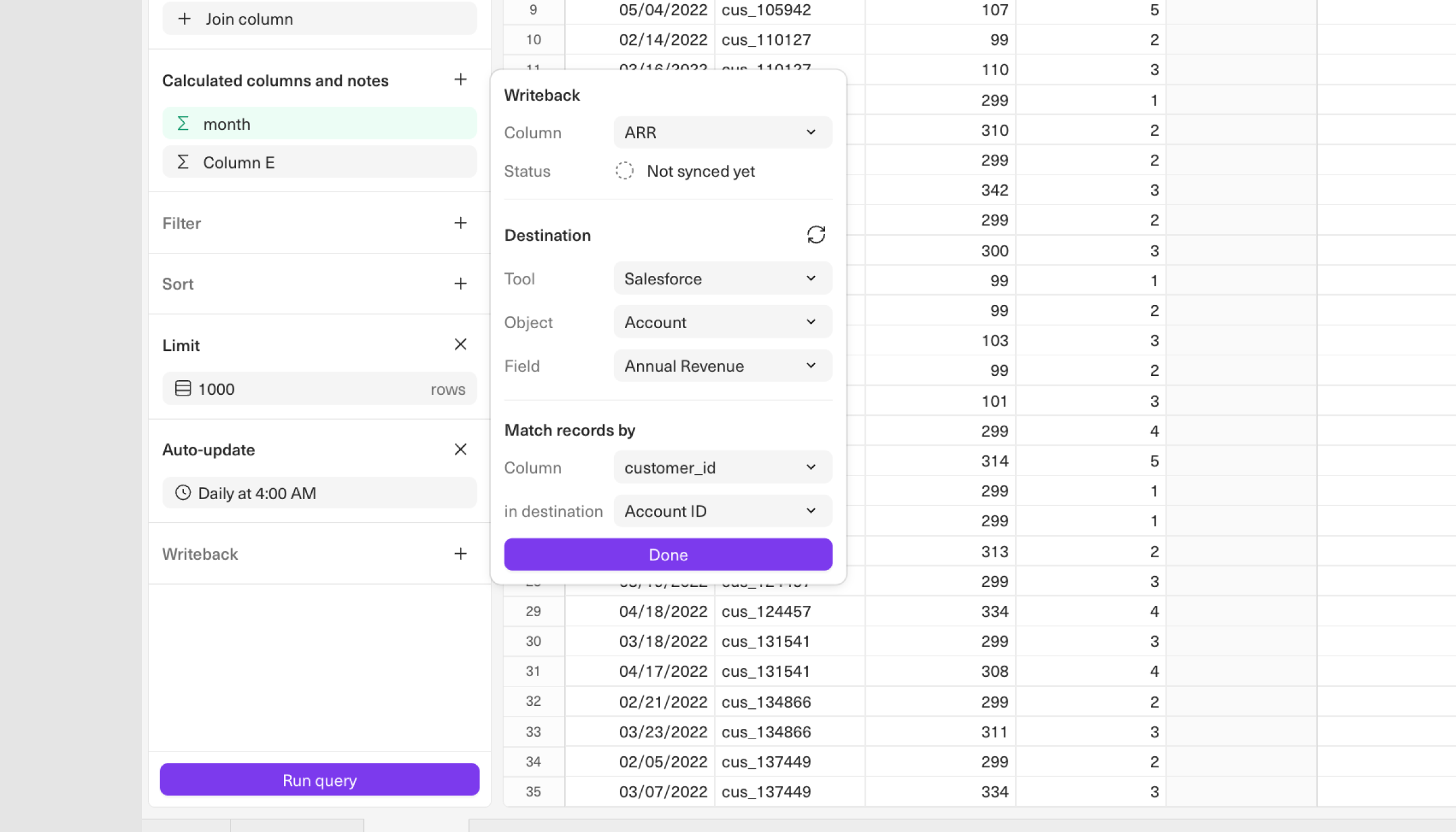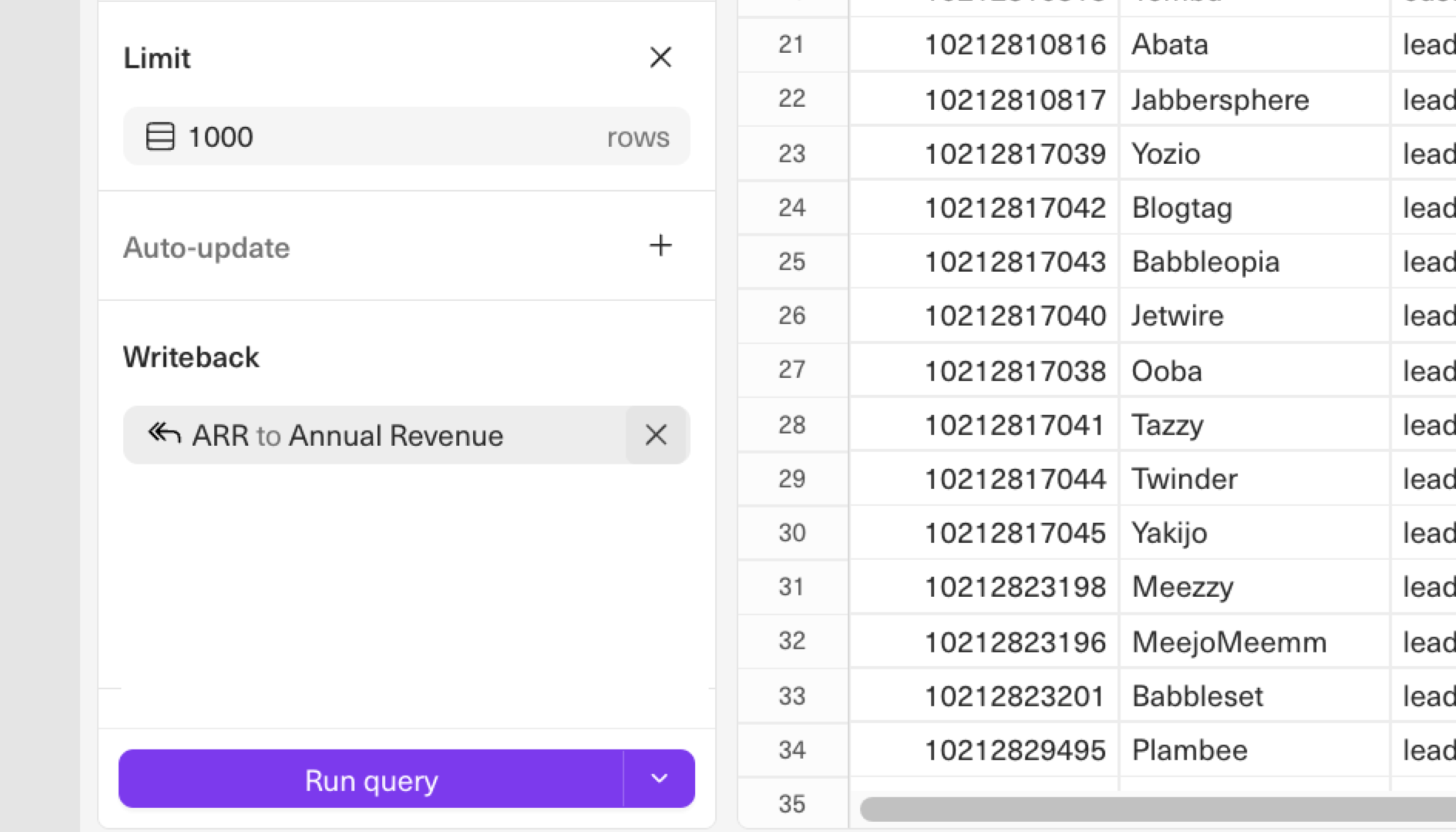Writeback to Salesforce
Push edits or new columns into Salesforce based on information in an Equals sheet.
Note that you will need to reach out to your Equals CSM to have this functionality enabled.
Writeback lets you update Salesforce properties directly from a single column in an Equals sheet. Common use cases:
- push a calculation from Equals (ex: ARR) into a Salesforce property
- fix incorrect CRM values (ex: Amount, Stage)
Please note that this action cannot be undone.
Getting started
Connecting to Salesforce
Even if you're using Salesforce as a datasource, you'll need to set it as a Writeback destination. To do so, navigate to the Datasources page and click on Writeback. Here, you'll be able to re-connect to Salesforce in order to set it as a destination.

Setting up the sync
Open or create a workbook with the values you want to update in Salesforce.
Confirm the sheet includes a primary key column: this is the unique ID that matches each row in Equals to a single record in Salesforce.
Writeback fields can either be calculated columns or must be a data edits or notes column.
Keep in mind: one sheet can write back to a given Salesforce property at a time (example: only one sheet can be writing Company → ARR)
Primary Keys
A Primary Key is a column in your sheet with no duplicates, and that maps to a Salesforce property that is unique.
Examples:
- For Accounts → the “Account ID” property is already unique by default in Salesforce, so the email column in your sheet can be your Primary Key.
To writeback, you must have a column with unique IDs that maps to Salesforce.
Fields available for Writeback
There are three types of ways to Writeback into Salesforce: you can push an entire calculated column, you can push data edits, or you can push a data notes column.
For data edits/notes, you must specify your primary key in your workbook in addition to the steps below (details in data edits and notes).
Note that you can only push one column per workbook into Salesforce.
Set up write back configuration
After your calculated column is set up or your notes/edits column is complete, you can begin to enable Writeback.

You will begin by selecting the column from your spreadsheet that you'd like to push into Salesforce (ex: "ARR").
Then select the destination datasource ("Salesforce - Test"), the object ("Accounts") and field that you'd like to update in Salesforce ("Annual Revenue").
Lastly, you'll need to specify the primary key used for the sync. Here you will set the column ("ID") and the corresponding field in Salesforce ("Account ID").
Once you hit "Done", Writeback will kick off and you should see this populate quickly. Note that this will be an ongoing sync. To disable the Writeback flow, you'll need to click the "X" on hover.

FAQ
Custom objects
If you want to Writeback to a custom object, you must first create a custom property under that object.
Why do I need a primary key?
Equals needs a 1:1 link between a row in your sheet and a record in Salesforce. Without that, there is no safe way to update.
What if the matching key isn't found?
If you are matching on Account ID and there isn't a match found, Equals will create new accounts in Salesforce.
Can I Writeback multiple columns at once?
Not today. One sheet can Writeback one column at a time.
I created a new property but I'm not seeing it as an option
If you just created a new property in Salesforce, click Sync from the Writeback modal to refresh the schema.
Can I undo a Writeback?
You cannot undo any Writeback you have sent, so you should set this up once you are confident in the information you want to push.
Have more questions?
Reach out to [email protected]. We're always happy to lend a hand!
Updated 21 days ago
